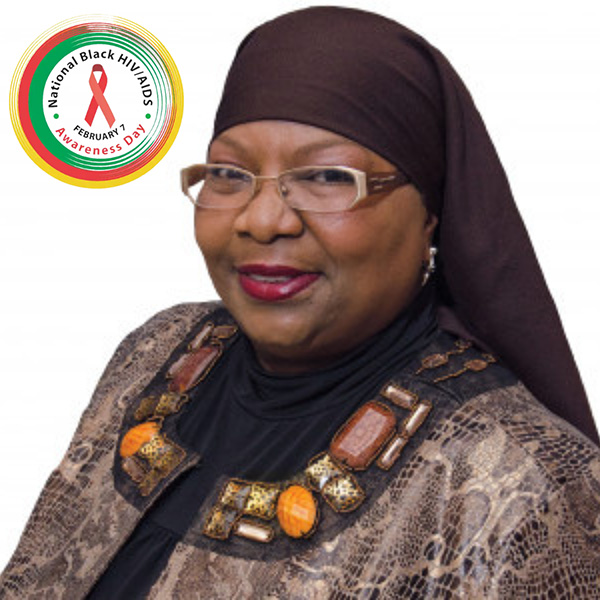The impact of social and economic inequities in Black communities is HIV.
In honor of National Black HIV/AIDS Awareness Day (NBHAAD), I’m reminded of the first time I came to know of HIV in the Black community–in the public housing project community where I was living in 1982. Just a year earlier, the CDC reported the first known cases of what we now call AIDS in its Morbidity and Mortality Weekly Report (MMWR). In that first month they saw 26 cases, one of whom was African American.
The year was 1982. I was attending Community College and had just purchased my first car. I lived in public housing in Philadelphia, as did my brother-in law Ronald, a decorated Marine Vietnam War Veteran who had just mysteriously died. While it was generally understood that he had overdosed (he was injecting drugs at that time), there was some chatter in my Black community that Ronald had died from AIDS. When the local funeral home only offered a cremation memorial service for Ronald, that validated for us (at least in our minds) that indeed it was AIDS.
After 1981, HIV cases increased in the Black community each year until finally, in 1990, the number of new cases of HIV among African Americans exceeded the number of cases of HIV in whites, and it has remained that way ever since.
Part of the culture among some in the Black community is that you should “mind your own business.” HIV has been the elephant in the room which we have tried our utmost to ignore. But we can no longer afford to ignore HIV or be confused about it–because HIV has become our business. The conspiracy theories surrounding the origins of HIV become less important as research reveals that HIV thrives in communities, particularly Black communities, where social and economic inequity and minimal access to basic human rights has become the norm.
For Black communities, HIV is in some ways more of a social condition than it is a medical condition. A clear case of cause and effect. HIV is more than a virus–it is the proof positive of social and economic inequity, or systemic suppression of basic human rights–which results in increased vulnerabilities to acquiring HIV in the first place.
Let us not confuse risks factors with vulnerabilities. They are not the same thing.
Risk factors are ways in which HIV is transmitted. Blood via needle sharing or tattoos. Semen. Anal and vaginal fluids via condomless sex with a person with HIV who may not be virally suppressed. Breast milk from a person who has HIV and may not be virally suppressed.
Vulnerabilities are social and economic factors that lead to contracting HIV in the first place. Including, but not limited to, food insufficiency, unstable housing, lack of health care, poverty, and lack of employment opportunities with living wages. Lack of educational opportunities. Linguicism. Library closure. Untreated mental health problems. Underfunded substance rehabilitation programs or youth development programs. Higher rates of incarceration that destabilize families and impact political power in Black communities. People with advanced HIV and AIDS may qualify for disability benefits that limit their ability to earn additional income. Many of these factors occur in lower educational and impoverished urban areas, however limited health care access and limited transportation infrastructure become vulnerabilities for Black people living in rural areas.
Despite advances in HIV prevention, the sheer abundance of social economic factors that persist in Black communities has provided a fertile environment for HIV to flourish. This helps explain reports that show African Americans, more than any other race, have the highest rates of HIV cases in the nation. Even though Black people make up just 14% of the U.S. population, we account for nearly half of those living and dying with HIV and AIDS. in 2017, AIDS was the eighth leading cause of death among Black women ages 35–44, and the sixth leading cause among Black men ages 35–44.
As we acknowledge National Black HIV and Awareness Day each year, we cannot ignore the ongoing challenges and impact of the many social and economic factors that persist in Black communities.
With the devastating impact of these social and economic inequities in Black communities, our direction and demands become crystal clear. As a community, our direction must be an upward bound movement which honors our heritage and reflects our perseverance and resilience. As a society, we cannot afford to be silent on the issue of AIDS–because silence has not worked in our favor. Our collective silence has resulted in too many unnecessary deaths of Black men and women. As we continue to make our case for true liberation, we must demand to be liberated from discrimination, and the well-worn path of social and economic inequities, that have allowed HIV to establish a foothold in Black communities.
So, on this National Black HIV and AIDS Awareness Day, as my memories are stirred of the first time I came to know of HIV in the Black community, in the public housing project where I was living in 1982, it reminds me of a story yet to be written–of Black Communities liberated from the AIDS epidemic.
Painful as it is, our pain has purpose, and our purpose is liberation.
Waheedah Shabazz-El is the Director of Community Outreach for The Reunion Project.
https://www.cdc.gov/nchhstp/newsroom/docs/timeline-30years-hiv-african-american-community-508.pdf
https://www.apa.org/pi/ses/resources/publications/hiv-aids
